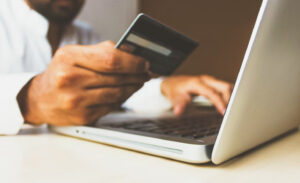 Credit cards have made paying for things incredibly easy. With just a quick swipe, tap, or click, you can buy just about anything. But that convenience comes with a risk. Every time you pull out your card, there’s a chance your information could end up in the wrong hands. And while fraud can happen anywhere, certain places carry a much higher risk.
Credit cards have made paying for things incredibly easy. With just a quick swipe, tap, or click, you can buy just about anything. But that convenience comes with a risk. Every time you pull out your card, there’s a chance your information could end up in the wrong hands. And while fraud can happen anywhere, certain places carry a much higher risk.
When people get hit with credit card fraud, it can lead to serious financial stress. Some even turn to options like title loans in Montana to cover emergency costs while they sort things out. While credit cards offer strong protections against fraud, it’s still much better to avoid the problem in the first place. Let’s take a closer look at where you need to be extra cautious.
Gas Stations: Easy Targets for Skimmers
Gas stations are one of the most common hotspots for credit card theft. Many older pumps still use outdated card readers that are easy targets for skimming devices. Thieves place small devices over or inside the card slot to copy your card’s data when you swipe.
The problem is that these skimmers are often hard to spot. They blend in with the pump’s design and can sit there collecting card information from dozens of people before they’re discovered. When possible, pay inside the station where the card reader is more secure or use a digital wallet to avoid swiping altogether.
ATMs: Not All Are Safe
Much like gas stations, ATMs can also be targeted by criminals using skimming devices. While bank-owned ATMs inside branches are generally safer, stand-alone machines in convenience stores, airports, or outside areas are riskier. These machines are easier for thieves to tamper with without being noticed.
Always inspect the card slot and keypad before inserting your card. If anything seems loose or looks different from usual, find another machine. When possible, use ATMs that are directly connected to a bank.
Public WiFi: A Digital Danger Zone
While this isn’t a physical location, using your credit card over public WiFi can be just as risky. Coffee shops, airports, hotels, and other public places often offer free WiFi, but these networks are usually not secure. Hackers can intercept data as it moves across the network, stealing credit card information and other personal details.
If you need to shop or handle financial transactions online, wait until you’re on a secure, private connection. Or better yet, use a virtual private network (VPN) to add a layer of security to your internet activity.
Online Shopping: Not Every Site Is Trustworthy
Shopping online has become a regular part of life, but not every website is safe. Fake websites that look like real stores are set up to steal credit card information. Even legitimate looking ads on social media can lead to fraudulent sites.
Before entering your card details, make sure the website’s URL starts with “https” and check for the padlock icon in the browser bar. Stick to well-known retailers whenever possible, and avoid clicking on random ads that pop up while scrolling through social media.
Restaurants and Bars: Out of Sight, Out of Control
When you hand your credit card to a server or bartender, you’re trusting that they handle it responsibly. Unfortunately, there have been cases where dishonest employees use portable skimmers to copy card information before returning your card.
This risk increases in places where your card is taken out of sight, like some restaurants. If possible, choose places where you can pay at your table or use mobile payment options that keep your card in your hand the whole time.
Hotels: A Surprising Hotspot
Hotels gather a lot of personal and payment information when you book a room. Unfortunately, hotel systems have been frequent targets for data breaches. Front desk fraud, compromised reservation systems, and phishing scams aimed at hotel guests are all risks.
To protect yourself, book rooms directly through the hotel’s official website or by calling the hotel directly. Be cautious of emails or calls requesting your credit card information, especially if you didn’t initiate the contact.
Rental Services: Short Term but High Risk
Car rentals, bike shares, and even scooter rentals often require you to leave credit card information on file. If these companies experience a data breach, your information could be exposed. In some cases, scammers set up fake rental kiosks or websites to trick people into providing card information.
Stick with well-known rental services, and monitor your credit card statements closely after using one. If you see any suspicious activity, report it immediately to your card issuer.
Keeping Your Credit Card Safer
While it’s impossible to eliminate all risk, there are steps you can take to lower your chances of becoming a victim of credit card fraud:
- Use credit cards that offer fraud protection and zero liability for unauthorized charges
- Enable text or app alerts to notify you of transactions in real time
- Review your statements regularly and report suspicious charges immediately
- Use contactless or mobile payments when available, as these methods add extra layers of security
Being Aware Makes a Big Difference
Credit cards offer incredible convenience, but staying alert to where and how you use them is important. The places we’ve discussed aren’t inherently bad, but they do carry higher risks that deserve extra caution. With a little awareness and a few simple precautions, you can enjoy the benefits of your credit card without falling into the traps that fraudsters set.
In the end, protecting your financial information is about being proactive. The more you know about where your card data might be vulnerable, the better prepared you are to keep your money and your credit safe.


